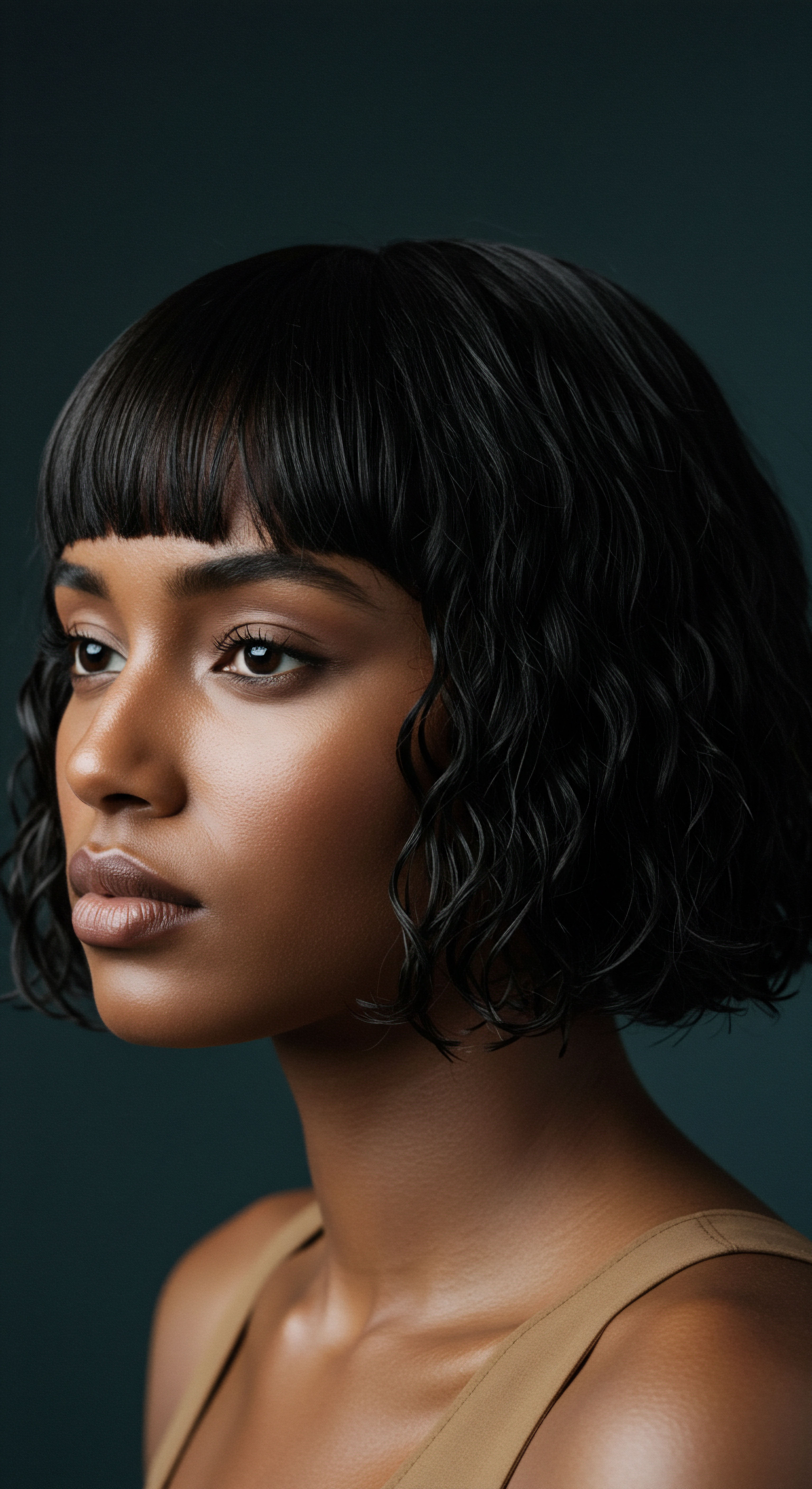
Roots
A single strand of hair, whether it coils tightly or cascades in soft waves, carries within its very being a profound story. This story begins not on the visible surface, but deep within the scalp, cradled by a remarkable structure ❉ the hair follicle. To truly appreciate the unique beauty and needs of textured hair, one must first journey inward, past the visible curls and coils, to the cellular origins that dictate its magnificent form.
Here, in this hidden realm, the architecture of the follicle orchestrates the destiny of each hair fiber, shaping its curvature, its strength, and its singular presence. Understanding this foundational biology allows for a more attuned and respectful approach to care, recognizing that textured hair is not simply a style choice, but a biological expression of identity and heritage.
The hair follicle, a complex, multi-cellular compartment buried deep within the skin, serves as the dynamic factory for hair production. At its base, nestled within the dermis, lies the hair bulb, a specialized region that houses the dermal papilla and the hair matrix. The dermal papilla, a cluster of mesenchymal cells, plays a central role in hair growth, acting as a signaling hub that supplies essential nutrients and molecular cues to the surrounding hair matrix cells. These matrix cells are the primary drivers of hair creation, undergoing rapid division and differentiation to form the various layers of the hair shaft.
The visible hair strand emerges from the scalp, but its inherent shape is determined long before it sees the light of day. This shape is a direct consequence of the follicle’s structure. Straight hair typically arises from follicles that are more circular in cross-section and descend straight into the scalp.
In stark contrast, textured hair, encompassing waves, curls, and coils, originates from follicles that are notably more elliptical or asymmetrical in shape. These curved follicles, often exhibiting a retro-curvature at the hair bulb, dictate the hair fiber’s propensity to bend and twist as it grows.
The hair follicle, a hidden architect beneath the scalp, designs the unique curvature and character of every textured strand.

Anatomy of a Hair Follicle and Textured Hair Formation
The intricate dance of cells within the hair follicle sets the stage for textured hair’s distinctive qualities. The asymmetry of the follicle, particularly in the mitotic zone around the dermal papilla, influences how cells divide and keratinize, leading to the elliptical cross-sectional shape of textured hair strands. This elliptical shape, rather than a round one, allows the hair to naturally coil and curve.
Within the follicle, the inner root sheath (IRS) plays a supporting yet crucial role. Comprising three cellular layers – Henle’s layer, Huxley’s layer, and the inner cuticle – the IRS acts as a temporary mold, guiding the developing hair shaft and helping it maintain its nascent shape as it emerges. Trichohyalin, a protein found in the inner root sheath and medulla, is involved in cross-linking keratin filaments, contributing to the mechanical strength of the hair follicle and shaft. Polymorphic variations in the gene for trichohyalin (TCHH) are significantly associated with hair curl and morphology.
- Hair Bulb ❉ The deepest part of the follicle, housing the dermal papilla and hair matrix, where active cell division begins.
- Dermal Papilla ❉ A cluster of cells providing nutrients and signals, crucial for hair growth and determining hair characteristics.
- Hair Matrix ❉ Proliferating cells that differentiate to form the hair shaft and inner root sheath.
- Inner Root Sheath ❉ A transient structure that molds the growing hair fiber, giving it its initial shape.
- Outer Root Sheath ❉ A protective layer continuous with the epidermis, surrounding the inner root sheath.
- Sebaceous Gland ❉ Produces sebum, an oil that lubricates the hair shaft and scalp, though its distribution can be challenging in highly coiled hair.

How Does Follicle Shape Influence Curl Pattern?
The mechanism by which a curved follicle generates a curved hair fiber is a subject of ongoing scientific inquiry. Current understanding suggests that the asymmetrical nature of the follicle leads to uneven cell division and keratinization along its circumference. This means that cells on one side of the follicle might divide and mature at a different rate or produce keratin proteins with slightly different arrangements than cells on the opposite side. This differential growth and protein alignment causes the hair strand to bend and twist as it grows, forming the characteristic curls and coils.
Moreover, the angle at which the hair emerges from the scalp also plays a role. Hair that grows straight out tends to be straight, while hair that grows at a curved angle naturally forms curls. For highly coiled hair, such as Afro-textured hair, the follicle often exhibits an S-shape or a highly elliptical cross-section, with the hair growing almost parallel to the scalp before coiling.
| Follicle Shape Round |
| Hair Fiber Cross-Section Circular |
| Resulting Hair Texture Straight |
| Follicle Shape Slightly Oval |
| Hair Fiber Cross-Section Slightly Elliptical |
| Resulting Hair Texture Wavy |
| Follicle Shape Elliptical |
| Hair Fiber Cross-Section Oval to Flattened Oval |
| Resulting Hair Texture Curly |
| Follicle Shape Highly Oval or Flat |
| Hair Fiber Cross-Section Kidney-shaped to Flat |
| Resulting Hair Texture Coily or Kinky |
| Follicle Shape The inherent shape of the hair follicle dictates the eventual curvature of the hair strand. |

Ritual
Stepping into the world of textured hair care is akin to learning a delicate language, where each touch, each product, and each practice speaks directly to the hair’s inherent structure. Armed with an understanding of the hair follicle’s role in shaping our curls and coils, our daily rituals transform from routine tasks into acts of informed care. The choices we make for cleansing, conditioning, and styling become a thoughtful conversation with our hair, acknowledging its unique biological blueprint and working in harmony with its natural inclinations. This section invites us to consider how our hands-on practices can honor the follicle’s design, promoting not just outward appearance, but also the deep well-being of our strands.
The specific architecture of the textured hair follicle influences the very properties of the hair shaft that emerges. Because of its curved path and elliptical cross-section, textured hair experiences challenges that straight hair might not. For example, the natural oils produced by the sebaceous glands, which typically lubricate the hair shaft, find it more difficult to travel down the length of a highly coiled strand. This inherent difficulty in oil distribution often leads to increased dryness in textured hair, making moisture retention a constant priority in care routines.
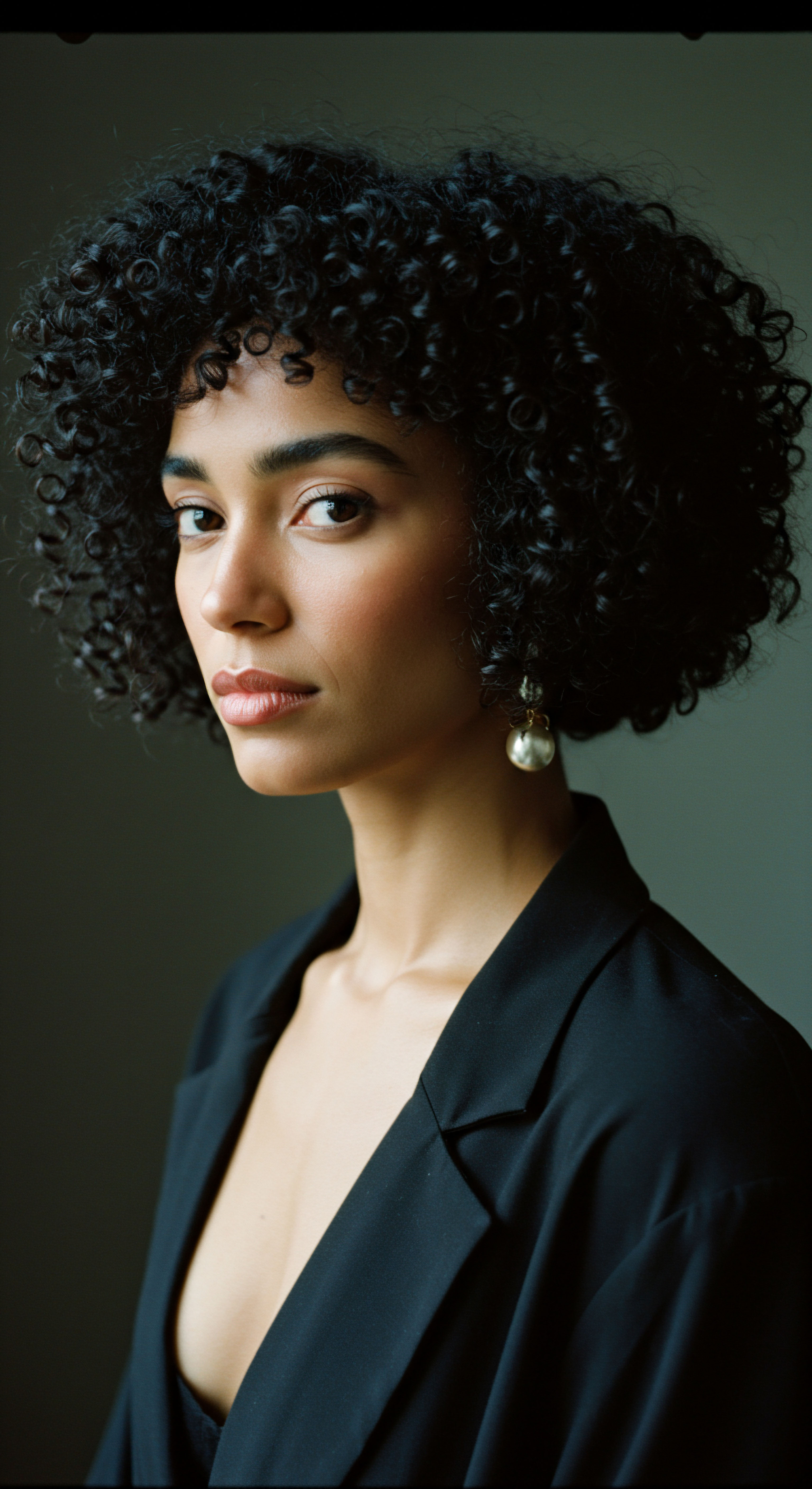
How Does Follicle Design Inform Care Practices?
Understanding the follicle’s influence guides our approach to hair care. Since the curl pattern is determined at the follicular level and cannot be permanently altered by external means, the focus shifts from fighting natural texture to enhancing and preserving it. This perspective encourages gentle handling and the selection of products that support the hair’s natural hydration and structural integrity.
For instance, the increased density of disulfide bonds in Afro-textured hair, which contributes to its tight curls, also makes it less resistant to mechanical extension and more prone to breakage if mishandled. This vulnerability underscores the need for practices that minimize friction and tension.
- Moisture Retention ❉ Given the challenge of sebum distribution, textured hair requires consistent external moisture from water-based products, conditioners, and emollients.
- Gentle Cleansing ❉ Harsh shampoos can strip hair of its limited natural oils, exacerbating dryness. Sulfate-free or low-lather cleansers are often preferred to preserve moisture.
- Detangling with Care ❉ The twists and turns of textured strands make them prone to tangling. Detangling wet hair with a wide-tooth comb or fingers, often saturated with conditioner, minimizes breakage.
- Protective Styling ❉ Styles that tuck away the ends of the hair, reducing exposure to environmental stressors and mechanical friction, help preserve length and health.
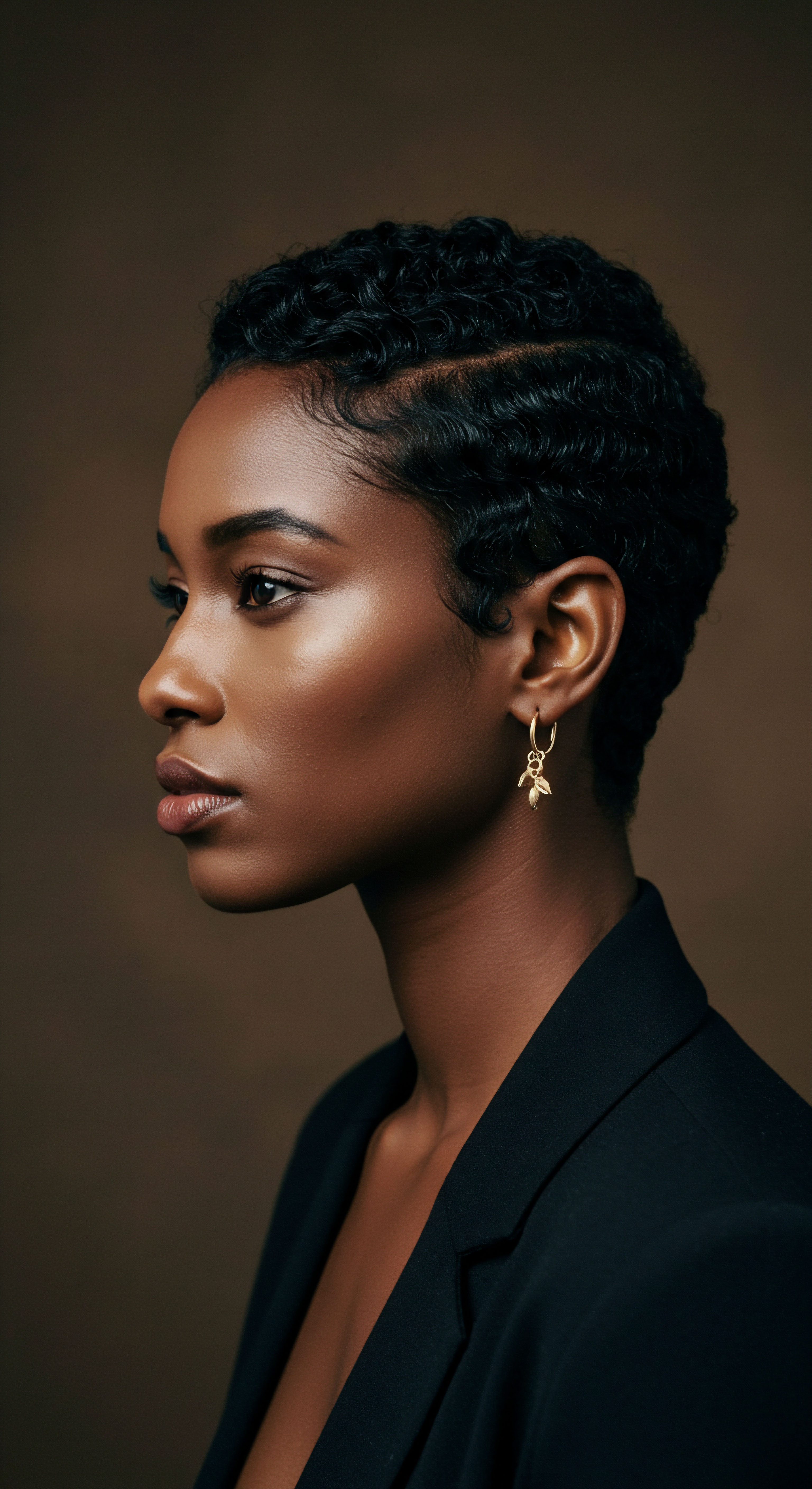
Styling Techniques and Follicle Health
The methods used for styling textured hair directly interact with the hair fiber that has grown from the follicle. Techniques that minimize manipulation and heat are generally favored to maintain the hair’s integrity. Heat styling, for example, can weaken the hair’s structure and potentially damage the cuticle, which is already a vulnerable layer in highly curved hair.
Conversely, techniques that encourage curl definition, such as scrunching or plopping, work with the hair’s inherent curl pattern, which is a direct manifestation of the follicle’s design. These methods enhance the natural bends and coils without imposing artificial structures that could lead to stress or damage to the hair shaft.
Thoughtful care practices, informed by the hair follicle’s blueprint, cultivate textured hair’s natural beauty and resilience.
| Hair Property (from Follicle) Elliptical cross-section and curved growth |
| Care Consideration Increased dryness, challenges with sebum distribution |
| Why It Matters Requires consistent hydration and moisture-sealing products. |
| Hair Property (from Follicle) Higher disulfide bond density (in some textured hair) |
| Care Consideration Reduced mechanical resistance, increased breakage risk |
| Why It Matters Calls for gentle handling, minimal tension, and protective styles. |
| Hair Property (from Follicle) Asymmetrical cell division |
| Care Consideration Inherent curl pattern set for life |
| Why It Matters Focus on enhancing natural curl rather than altering it with harsh methods. |
| Hair Property (from Follicle) Understanding these follicle-driven properties allows for a more effective and nurturing hair care approach. |

Relay
Beyond the immediate science of the hair follicle and the rituals of daily care, lies a deeper conversation—a relay of biological and cultural narratives that shape our understanding of textured hair. How do genetic predispositions, environmental whispers, and the echoes of cultural heritage intertwine to define the very essence of a curl? This section invites us to consider the profound connections that stretch beyond the individual strand, exploring the intricate interplay of factors that sculpt the follicle’s form and, consequently, the hair’s unique character. We will journey into the complex dance of genes, the subtle influences of our surroundings, and the powerful role of identity in embracing the hair that grows from within.
The foundational shape of the hair follicle is largely determined during embryonic development, a testament to the powerful influence of genetics. While the exact mechanisms that dictate a follicle’s curvature remain an area of active investigation, scientists have identified several genes associated with hair shape variation across different populations. For instance, the TCHH gene, responsible for the protein trichohyalin, which strengthens growing hair, contains variations linked to diverse hair shapes. The EDAR and WNT10A genes also play significant roles in hair morphology and cycling, with WNT10A being particularly linked to hair diameter and follicle patterning.

What Genetic Markers Influence Follicle Morphology?
Genetic studies, particularly genome-wide association studies (GWAS), have begun to unravel the complex genetic underpinnings of hair texture. These studies indicate that hair curl variation is often polygenic, meaning many genes contribute, each with a modest effect. While TCHH appears to affect hair curl across many populations, genes like EDAR and WNT10A show more specific associations with hair texture in certain ethnic groups. For example, variations in EDAR are linked to straight, coarse hair in individuals of East Asian descent.
One compelling area of research explores how genetic factors contribute to the observed differences in hair follicle density among various populations. A study examining follicular density in a healthy American population revealed notable distinctions ❉ individuals of African descent had an average hair density ranging from 148 to 160 hairs per square centimeter, compared to Caucasians, who showed an average density of 214 to 230 hairs per square centimeter. This difference in follicular density, coupled with the unique morphology of textured hair follicles (such as their elliptical shape and retro-curvature), influences how hair grows, its overall volume, and its susceptibility to external factors. Such biological variations underscore the importance of tailored care approaches that acknowledge these inherent characteristics.
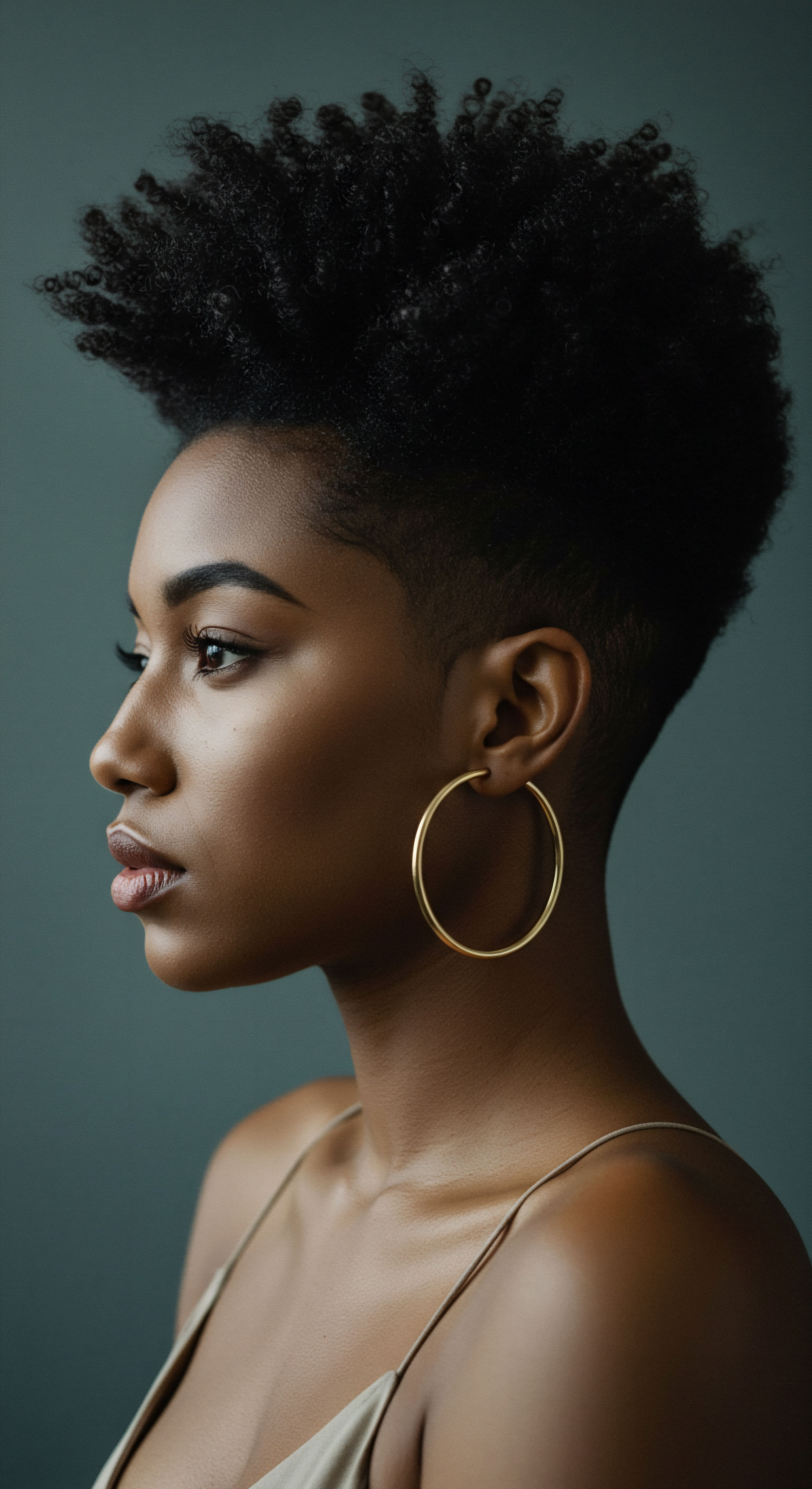
How Do Environmental Factors Impact Follicle Health?
While genetics lay the groundwork, environmental factors can also influence the health and function of hair follicles, and consequently, the appearance and resilience of textured hair. Humidity, pollution, and even temperature fluctuations can exert their influence. For instance, high humidity can cause hair to swell and frizz as moisture infiltrates the hair shaft, while dry climates can strip hair of its moisture.
Beyond visible changes, environmental stressors can also impact the scalp microbiome, the delicate ecosystem of microorganisms residing on the scalp and within hair follicles. An imbalanced scalp microbiome can contribute to irritation, inflammation, and even hair loss, potentially disrupting the hair growth cycle orchestrated by the follicle. This connection highlights that true hair wellness extends beyond the strand to the very environment of the follicle.
The hair follicle’s form is a confluence of genetic instruction and environmental interaction, a silent testament to our biological and lived heritage.

Follicle Sensitivity and External Stressors
The unique structure of textured hair, stemming from its follicle, can render it more susceptible to certain external stressors. The bends and twists, while creating beautiful patterns, also create points of weakness that are more prone to mechanical damage. This heightened vulnerability means that practices such as tight hairstyles, excessive heat, or harsh chemical treatments can lead to conditions like traction alopecia, where prolonged tension on the follicles causes hair loss. The follicle, though resilient, can be compromised by persistent external pressures.
Understanding this sensitivity allows for a more preventative and protective approach to care. It encourages the adoption of styling methods that respect the hair’s natural elasticity and minimize stress on the follicle, preserving its long-term health and the continuity of healthy hair growth.
- Genetics ❉ The primary determinant of hair follicle shape and, by extension, curl pattern.
- Dermal Papilla Signaling ❉ Influences hair shaft size, shape, and regeneration frequency.
- Keratinization Process ❉ Asymmetrical keratinization within the curved follicle contributes to the elliptical shape and curl.
- Hair Growth Cycle Regulation ❉ Follicles undergo cyclical changes, with growth factors and hormones influencing phases like anagen (growth).
- Sebum Production and Distribution ❉ Follicle-associated sebaceous glands produce oil, but distribution along highly curved hair is challenging.
- Mechanical Strength and Vulnerability ❉ The follicle’s structure influences the hair’s disulfide bond density, affecting its strength and susceptibility to breakage.

Reflection
To gaze upon textured hair is to witness a profound expression of life, a testament to the delicate yet powerful forces that shape us. The hair follicle, a tiny, often unseen marvel, stands as the quiet orchestrator of this beauty, a biological anchor for identity and a silent witness to our journeys. When we tend to textured hair with reverence and understanding, we are not simply engaging in a superficial act of grooming. Instead, we are participating in a conversation that spans genetics, environmental influences, and deep cultural heritage.
It is a dialogue that acknowledges the intricate science beneath the scalp and celebrates the vibrant expressions that blossom above it. This approach allows us to move beyond conventional notions of beauty, inviting a deeper appreciation for the intrinsic wonder of each unique strand, recognizing that its story is inextricably linked to the wisdom of its roots.
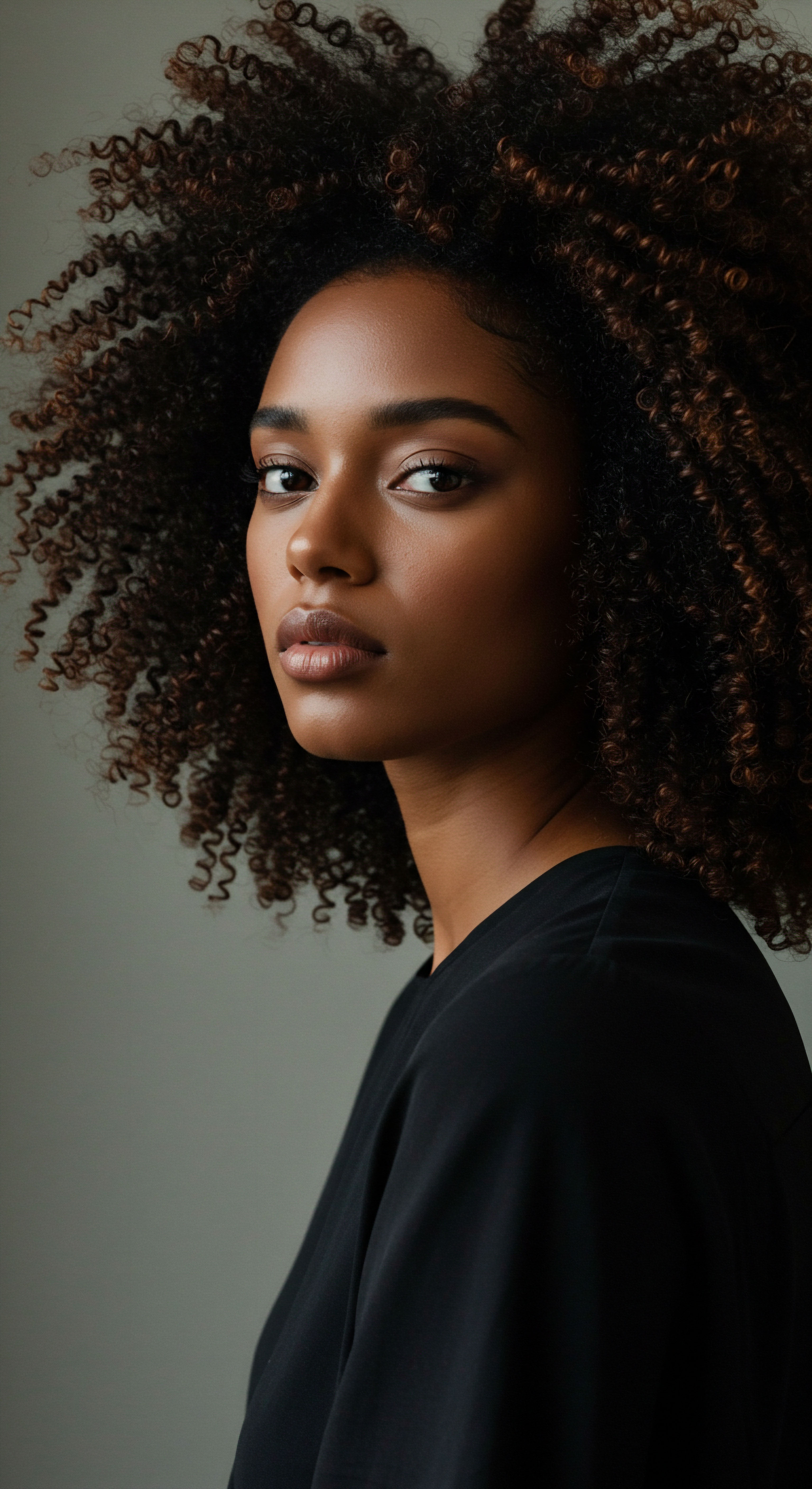
References
- Idowu, O. C. Markiewicz, E. & Oladele, D. B. (2024). The Genomic Variation in Textured Hair ❉ Implications in Developing a Holistic Hair Care Routine. MDPI.
- Thibaut, S. et al. (2005). The curly hair follicle is sculpted by a contracted arrector pili muscle. A hypothesis with treatment implications. Preprints.org.
- Westgate, G. E. et al. (2017). The what, why and how of curly hair ❉ a review. Experimental Dermatology.
- Davis-Sivasothy, A. (2011). The Science of Black Hair ❉ A Comprehensive Guide to Textured Hair Care. Saja Publishing Company.
- Loussouarn, G. et al. (2007). Ethnic variation in vellus hair follicle size and distribution. Skin Pharmacology and Physiology.
- Mintel GNPD. (2021). Hair Care Product Launches in North America with Anti-Pollution Claims.
- Flament, F. et al. (2025). Types and characteristics of hair across different countries ❉ results. Clinical, Cosmetic and Investigational Dermatology.
- Adoukè, D. (2022). All you need to know about afro hair. Doria Adoukè.
- Paus, R. & Cotsarelis, G. (1999). The Biology of Hair Follicles. The New England Journal of Medicine.
- Ramot, Y. & Zlotogorski, A. (2015). Hair Follicle Stem Cells. In ❉ Cell Biology and Translational Medicine, Vol. 2 ❉ Stem Cells in Dermatology. Springer.
- Schneider, M. R. et al. (2009). The hair follicle as a mini-organ. Current Biology.